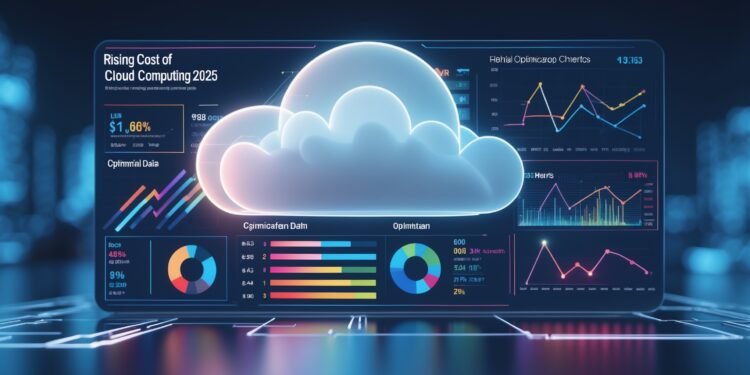Cloud computing promised us freedom—scalability, on-demand resources, no hardware headaches. And for a while, it delivered. But in 2025, businesses are waking up to a painful reality:
They’re paying a premium for convenience—and in many cases, drastically overpaying.
As cloud providers raise prices, and enterprise workloads grow more complex, the question becomes unavoidable: Is the cloud still worth it? Or have we quietly walked into a trap?
Here’s what’s driving the cost explosion—and how smart teams are fighting back.
💸 Why Cloud Costs Are Out of Control in 2025
Let’s start with what’s actually draining your cloud budget. It’s not just compute time or storage—it’s the hidden costs that creep up slowly and silently.
1. Data Egress Fees: The Cloud’s Best-Kept Secret
Want your data out of AWS or GCP? You’ll pay for that.
Cloud providers charge egress fees—a toll for every byte of data that leaves their network. And in 2025, as AI workloads balloon and multi-cloud grows, these fees are getting nastier.
Example: Moving 5TB of AI training data off AWS? Expect a bill in the thousands—just to move your own data.
2. Idle Resources & Over-Provisioning
Auto-scaling is great… in theory. But most teams overestimate usage and provision far more compute or memory than they need.
The result? You’re burning cash for machines that sit idle 80% of the time.
3. Vendor Lock-In & “Convenience Tax”
Big cloud providers love to sell you fully managed services—databases, pipelines, AI APIs—all at a markup. You get speed, sure… but at the cost of flexibility and independence.
Migrating off these services later? Expensive and painful. This “convenience tax” locks teams in and bleeds budgets over time.
4. Complex Billing Models
Cloud bills in 2025 are practically encrypted. Between tiers, regions, storage classes, and add-ons, most teams don’t actually understand what they’re paying for until it’s too late.
📉 The Business Impact: From Startups to Enterprises
In 2025, this cost crunch is hitting everyone:
- Startups are seeing runway slashed by cloud bills.
- Enterprises are being audited by finance teams asking, “Why is our cloud spend growing faster than our customer base?”
- AI/ML teams are burning tens of thousands per month training models on GPU clusters that rarely run at full capacity.
🧠 How Smart Teams Are Taking Back Control
The good news? There’s a huge shift happening in how devs and ops teams think about cloud. Here’s how companies are winning in 2025:
1. FinOps Becomes Non-Negotiable
FinOps—the practice of managing cloud spend with financial discipline—is now a core function.
Tools like CloudZero, Kubecost, and Harness let teams visualize costs per service, team, or environment. That means no more surprise bills, and clear accountability across dev teams.
2. Cloud Cost Optimization Is Automated
Teams are automating:
- Idle resource shutdowns
- Spot instance swaps
- Auto-scaling rules based on real usage, not guesses
Services like Cast AI and Spot.io automatically rebalance cloud workloads to save money without sacrificing performance.
3. Hybrid and Bare Metal Are Back
Many teams are moving critical workloads back on-prem or to bare-metal cloud providers like Equinix Metal or Hetzner, where performance is high and costs are predictable.
Hybrid cloud setups (on-prem for compute, cloud for storage) are becoming common, especially for AI-heavy orgs.
4. Open Source + Cloud-Native = Freedom
Instead of using AWS’s expensive managed database, teams are running Postgres with CrunchyData or MySQL on Kubernetes.
Instead of using Google’s AI APIs, they’re deploying open-source LLMs locally with Hugging Face or Ollama.
This shift gives devs control, reduces dependency, and slashes ongoing costs.
💥 The Future of Cloud: Transparent, Decentralized, and Smarter
Cloud isn’t going away. But the era of blind trust in cloud pricing is over.
In 2025, the winners are the teams that:
- Monitor usage like a hawk
- Know when to say no to convenience
- Reclaim flexibility with open tools and smarter infrastructure choices
The cloud still rules—but it no longer gets a free pass.


















